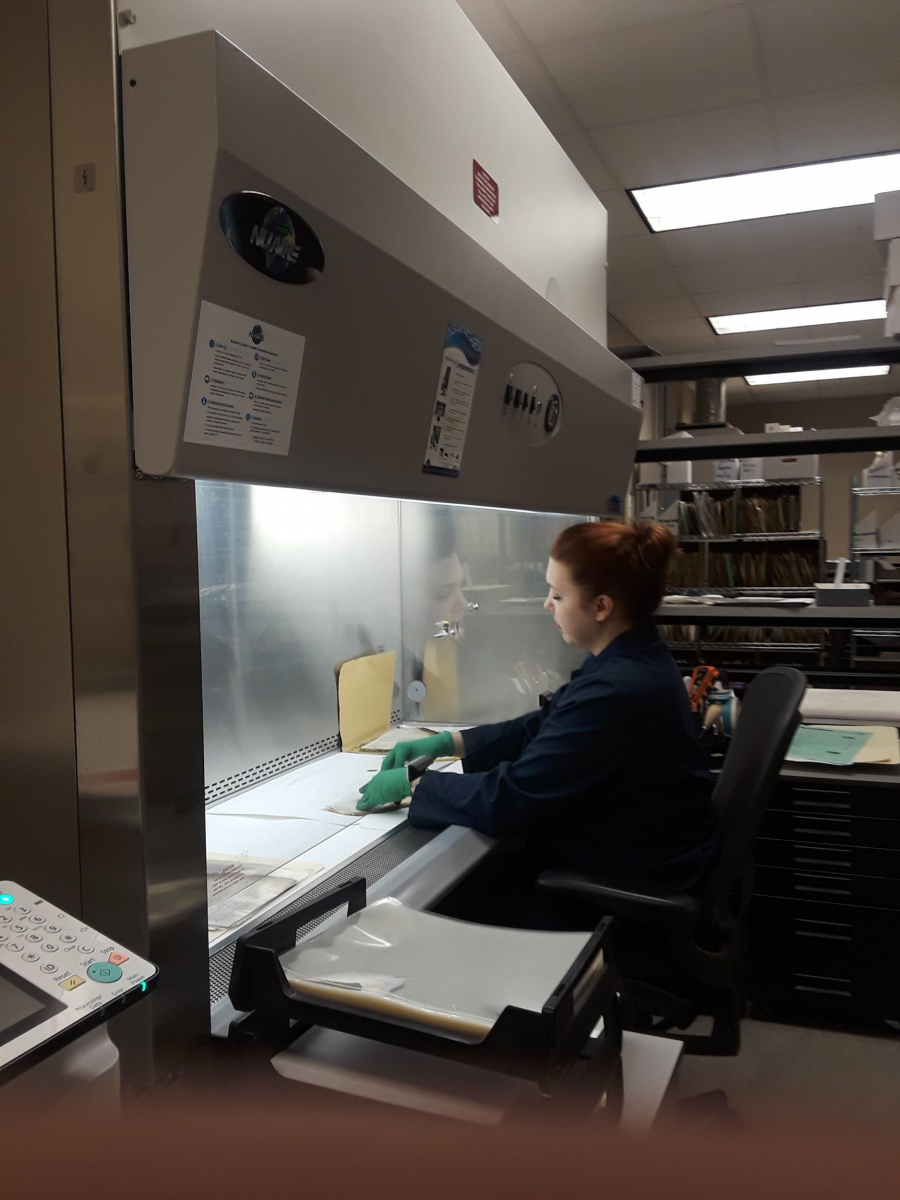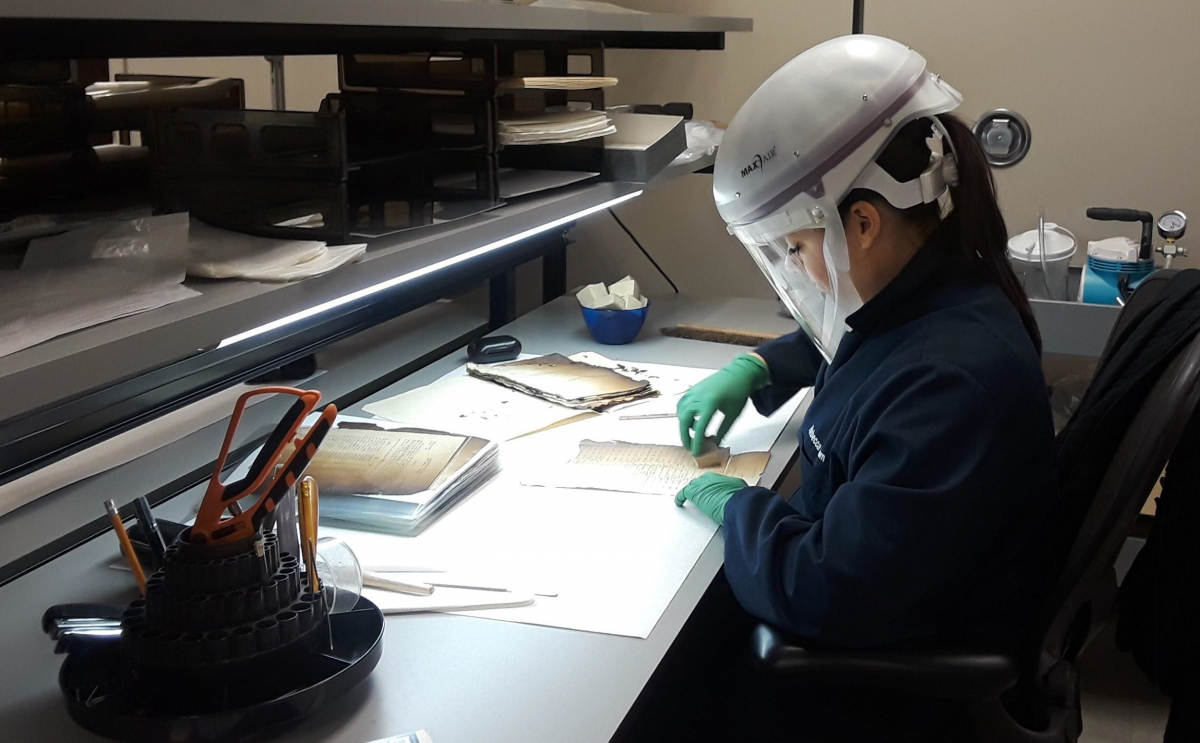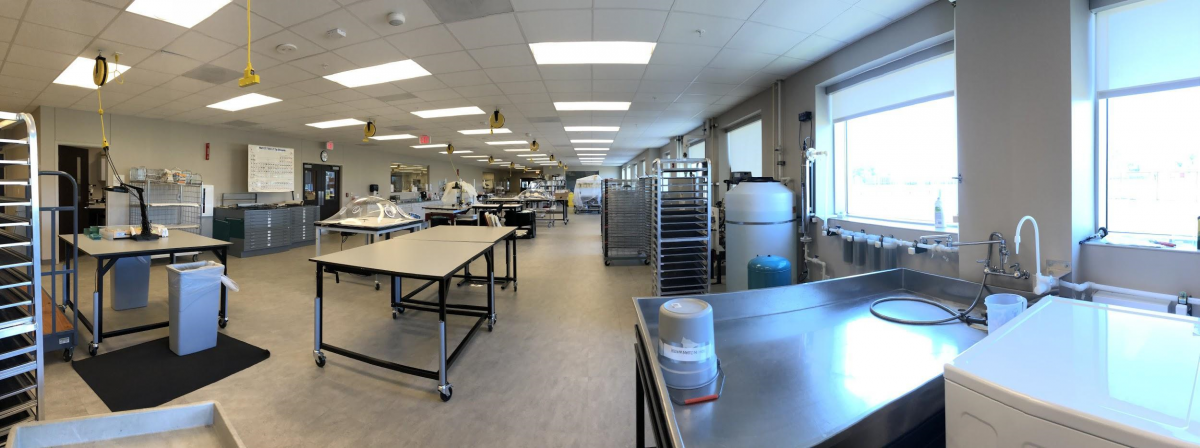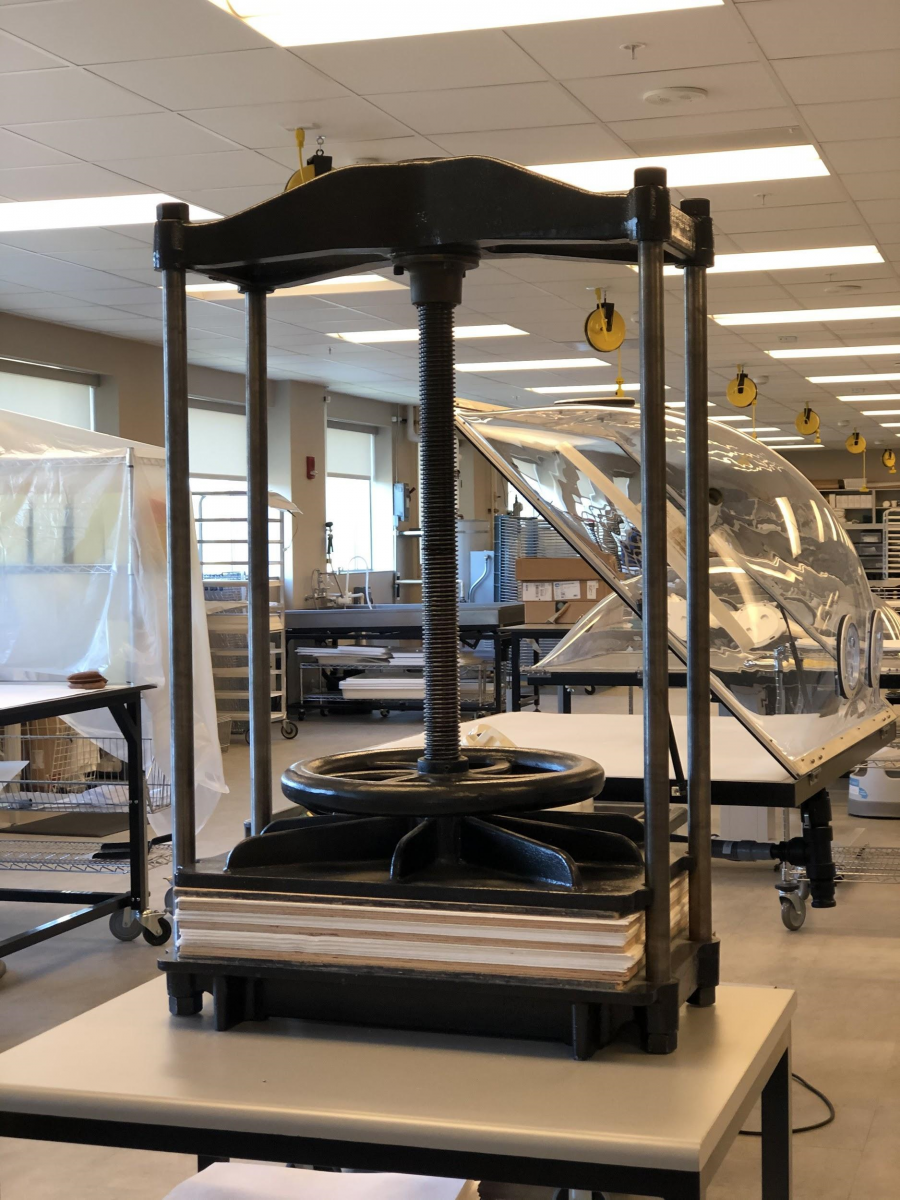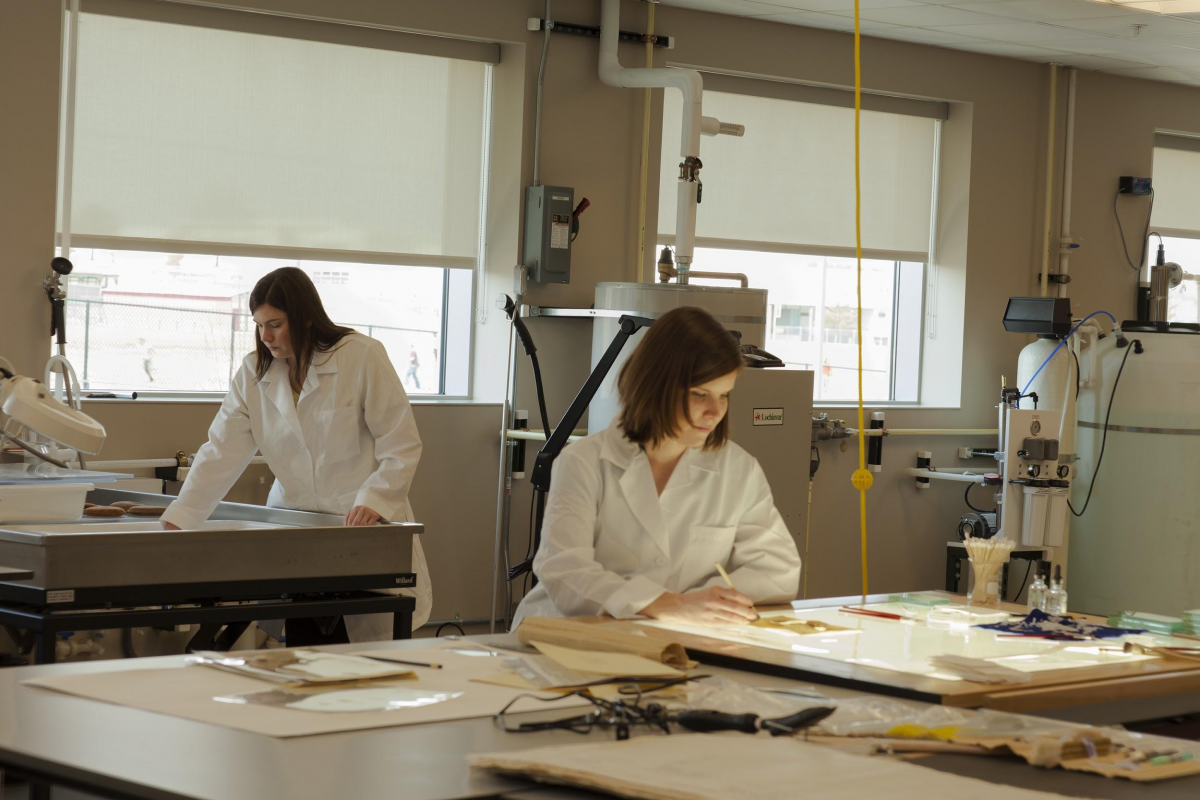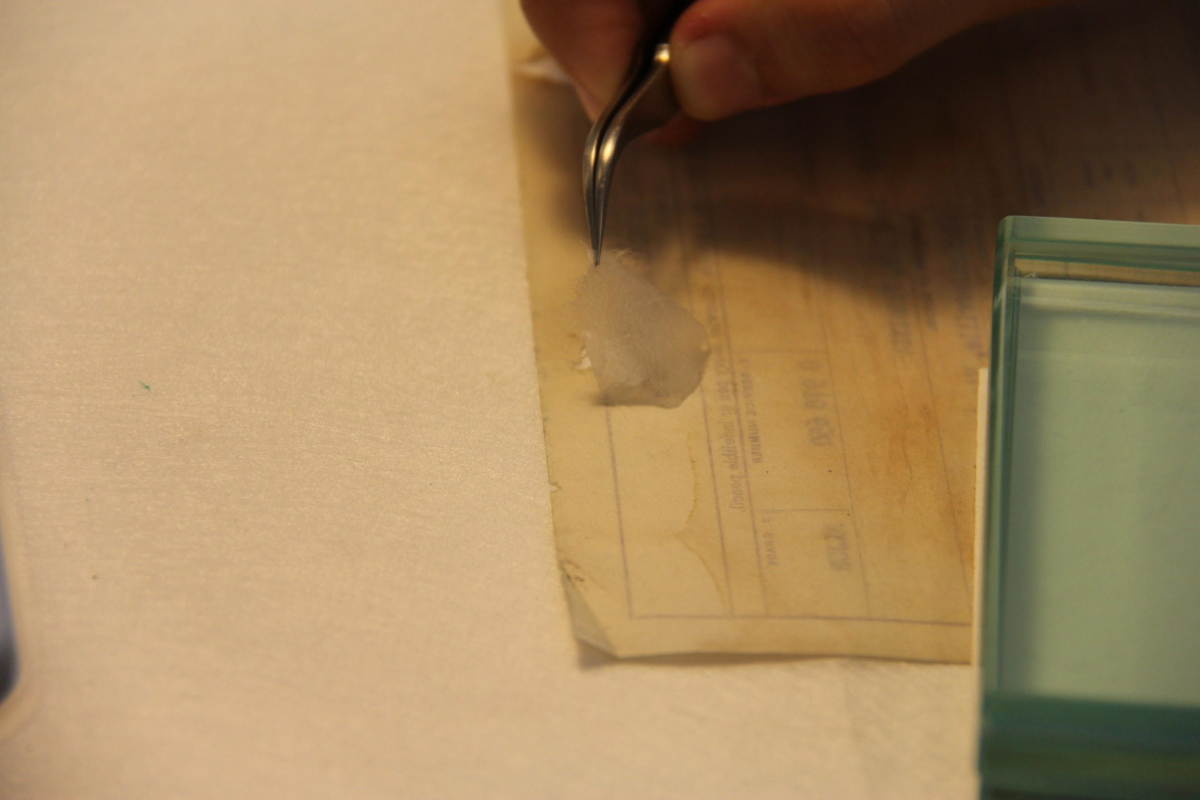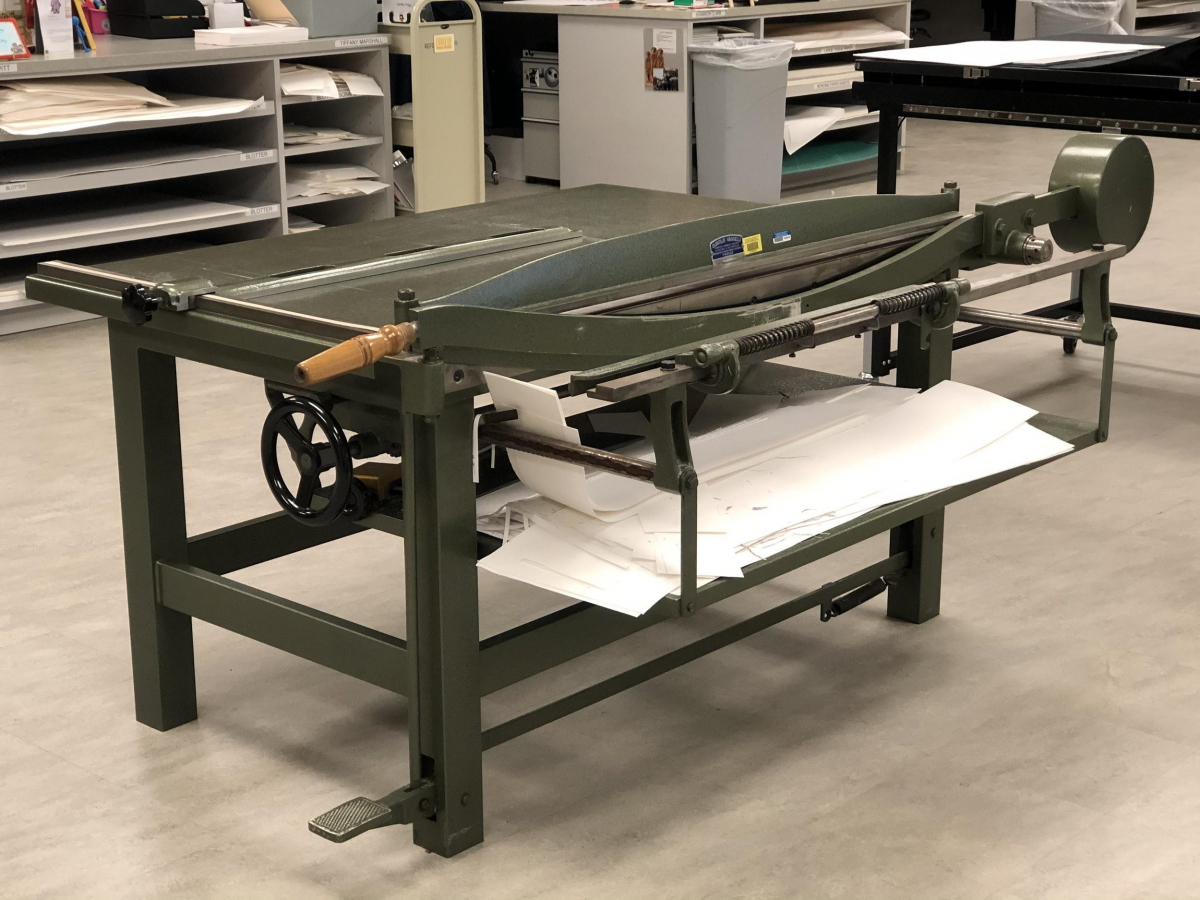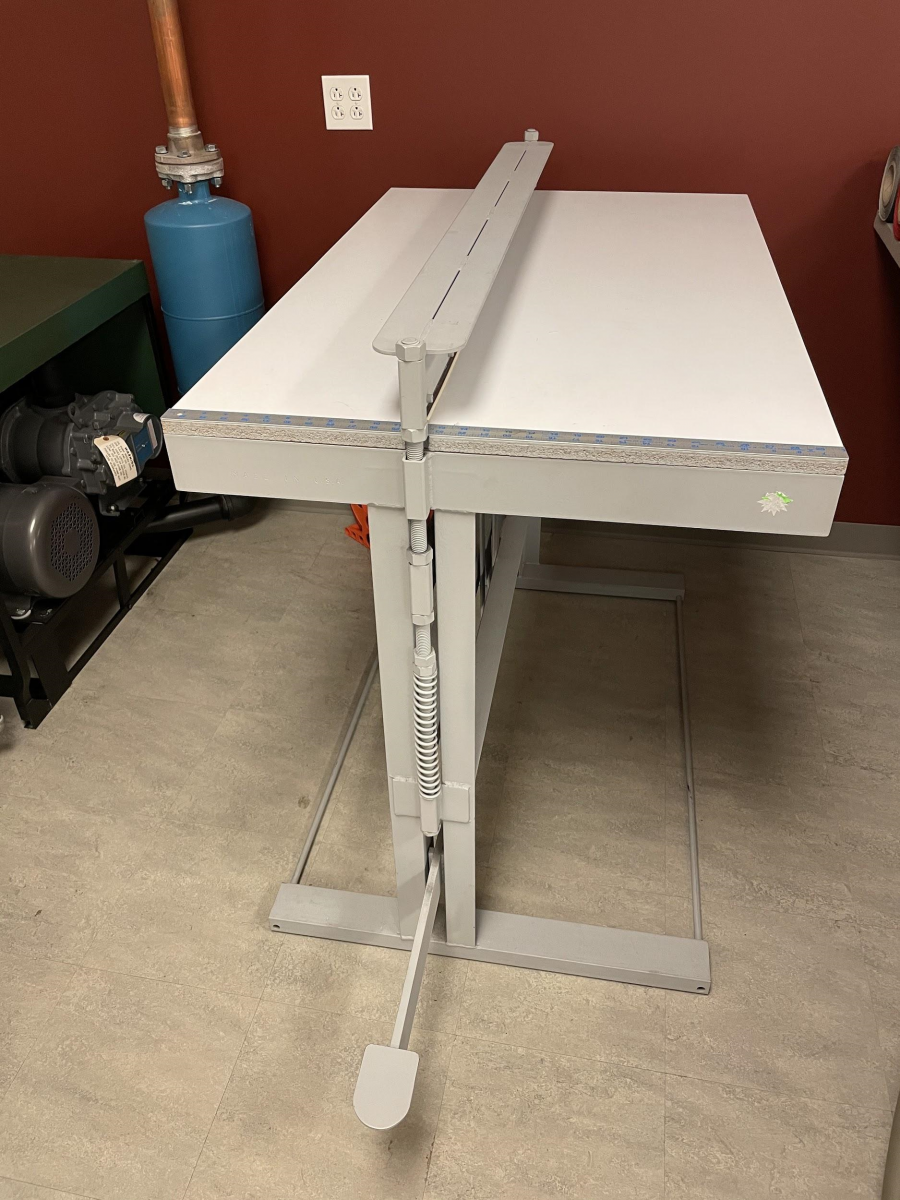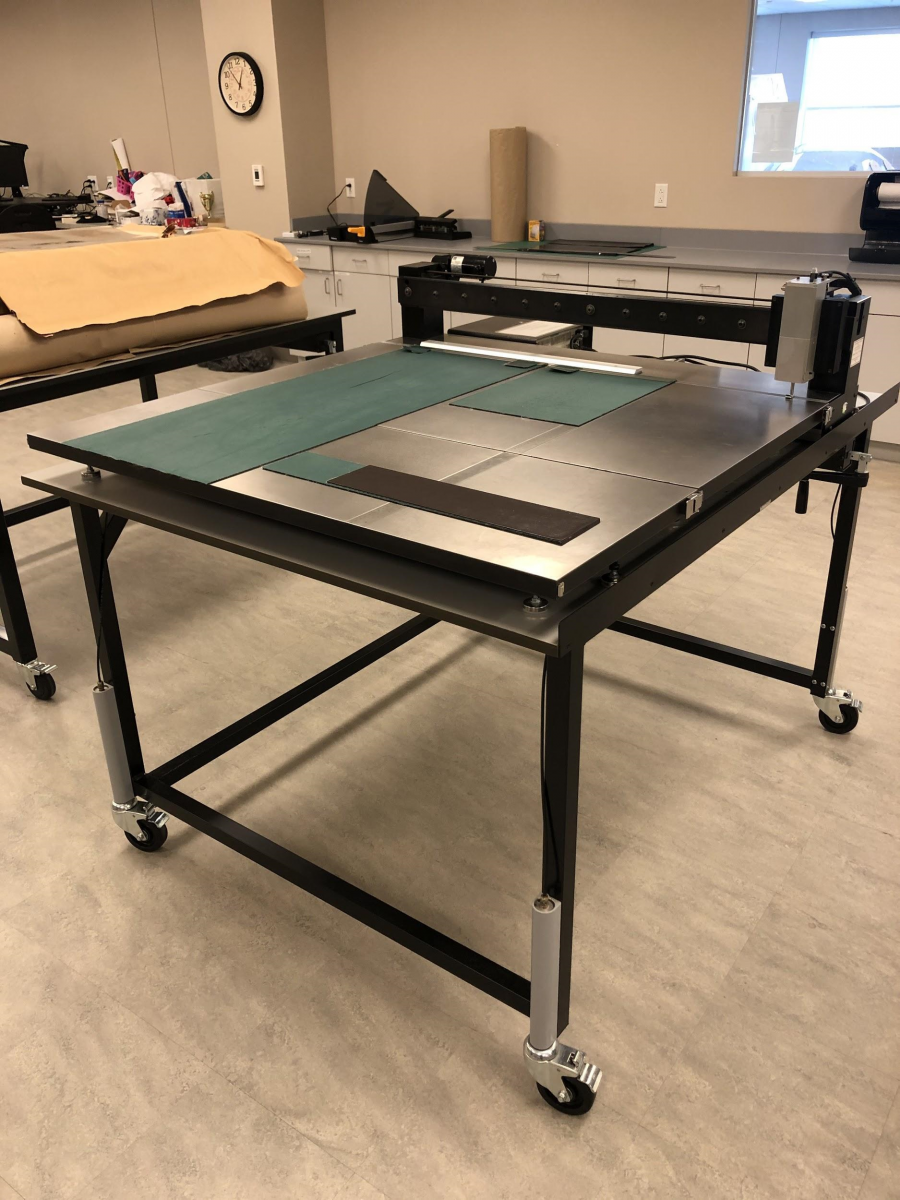
Conservation Treatment
Paper Lab
The Paper Lab in the St. Louis Preservation Division physically treats records held in St. Louis and in NARA’s regional facilities. The initial priority was treatment of military personnel records rescued from the 1973 Fire, focusing on the specialized work of mold and soot remediation using appropriate health and safety protocols. Today, the Paper Lab provides additional treatment on holdings in the National Archives at St. Louis and other regional archives. Because of the large number of records we treat suffering from similar types of damage, our lab focuses on batch work rather than the single-item treatment of many other conservation labs. We have a workflow in which large numbers of pages (or items) follow a standard progression of treatments as needed. A record may be worked on by multiple staff members as it passes from surface cleaning to other needed treatments in succession.
Decontamination Lab
The Decontamination Lab is the necessary first stop for damaged records that pose a health hazard. The room is kept under negative pressure to help contain bio-contaminants, such as mold or soot. The treatment work can be performed inside a biosafety cabinet, which protects staff by venting contaminants away from the worker. Staff also use individual respirators at work stations to treat paper that is too fragile to withstand the ventilation within a biosafety cabinet. Before cleaning begins, any fasteners such as staples and paper clips must be carefully removed. Surface cleaning using High Efficiency Particulate Air (HEPA) vacuums, vinyl sponges, and soft brushes removes much, although not all, of the mold and soot. Some mold and dirt may remain embedded in the paper fibers where it cannot be removed without further damaging the paper. Once mold and soot abatement is complete, the record moves from the Decontamination Lab to the Wet Lab for further treatment if pages are distorted, torn, or fragmented.
Wet lab
When records are fragile or information is not accessible because the records have been folded, rolled, crumpled, or torn, they are directed to the Wet Lab for aqueous or solvent-based treatments such as humidification, mending and other repairs. Paper not previously surface cleaned has fasteners removed and is cleaned of surface debris using a variety of erasers and soft brushes. It is important to remove as much surface debris as possible before performing treatments that introduce moisture to the paper so that dirt particles are not carried into or stain the paper.
Humidification is used to relax paper fibers and prepare them for flattening. To humidify, the paper fibers are exposed to moist air carefully controlled so the paper does not become saturated or wet. The Paper Lab primarily employs humidification domes for this treatment, although other methods are used depending upon condition and type of paper. After humidification, each sheet is carefully placed between blotter paper and dried under pressure in a book press or under weights.
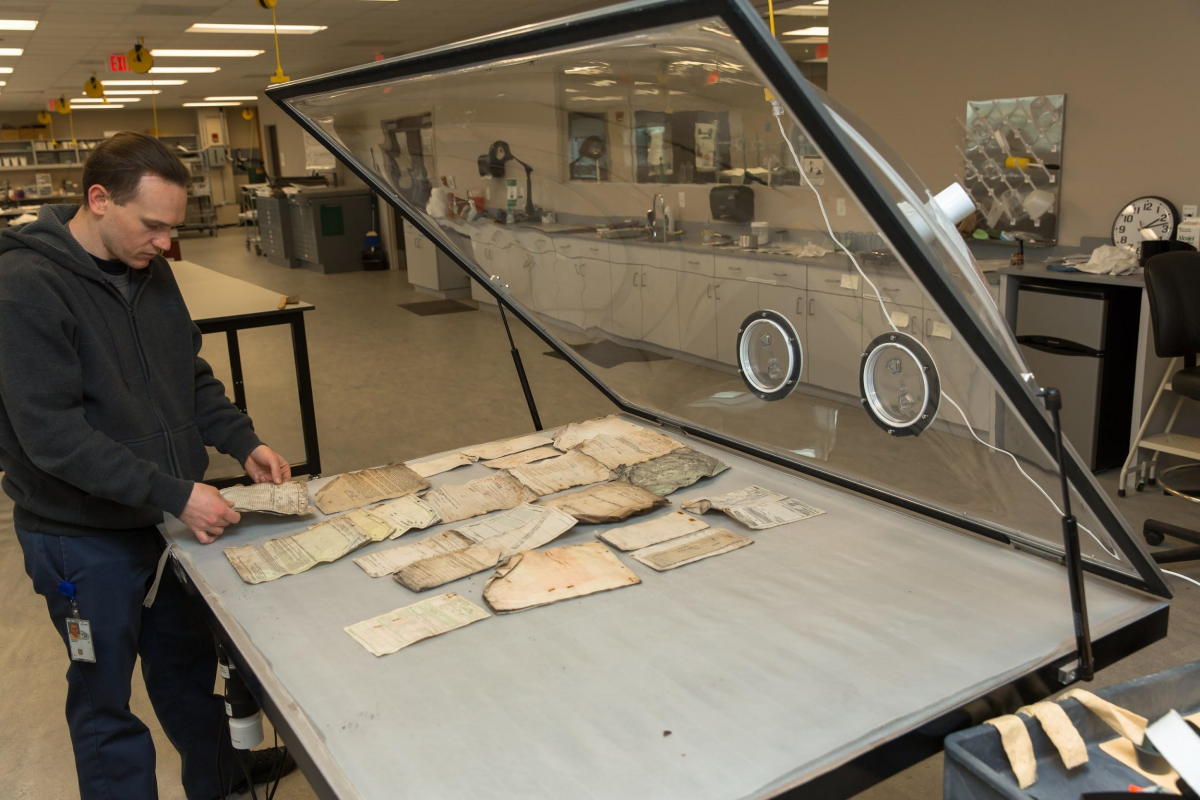
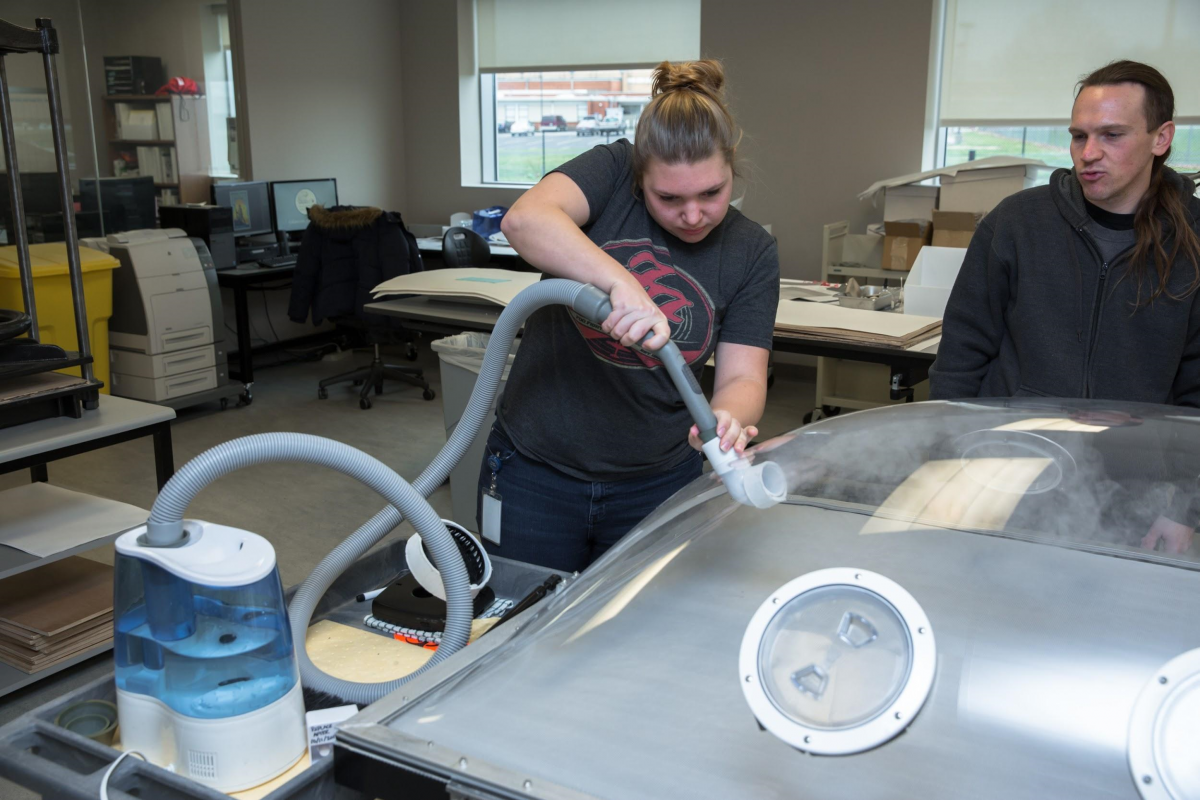
Preservation technicians place documents in a humidification chamber and attach a moisture source.
Mending is performed using a conservation-quality Japanese tissue paper so thin it is almost transparent. The long fibers of this paper make for a strong repair. The adhesives used are made by the Lab and must be reversible and stable. The Paper Lab also prepares papers coated with adhesives activated by either heat or moisture. A light table is often used to better view the tear and ensure the best alignment of the edges when applying the mend. Once adhered, a soft non-woven polyester isolating layer, an absorbent blotter and a light weight are placed over the mend so it dries under pressure.
Dry Lab
In the Dry Lab, an individual page needing additional support or protection is placed in a polyester L-sleeve. These sleeves are commonly used for our fire-damaged personnel files that need the additional support to withstand handling. Most files are placed in letter-sized, acid-free folders and boxes reflecting the association and order of the records as received by the division.
Custom folders and boxes for over-sized records are made using special equipment. Custom folders and boxes are made using the board shear and board creaser, while custom polyester sleeves are made on our ultrasonic welder. Additional bookbinding equipment, including a sewing frame, are also available for special treatment work in the Dry Lab.

